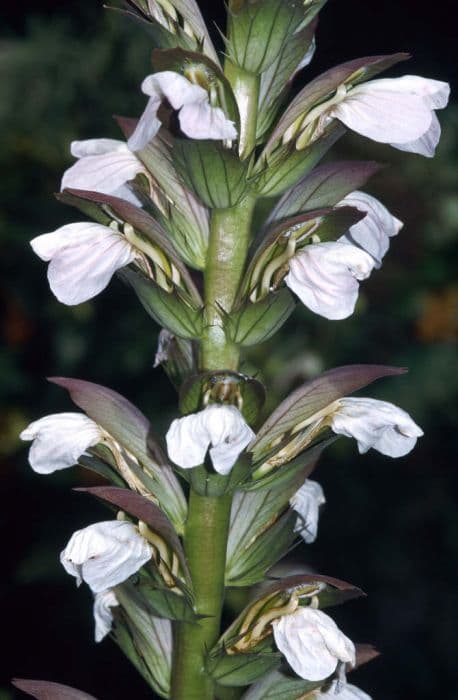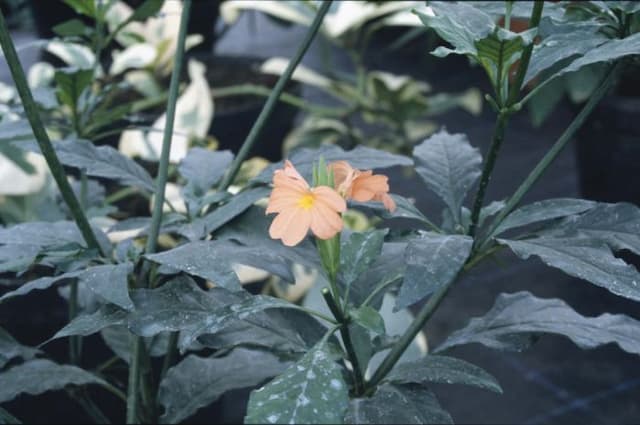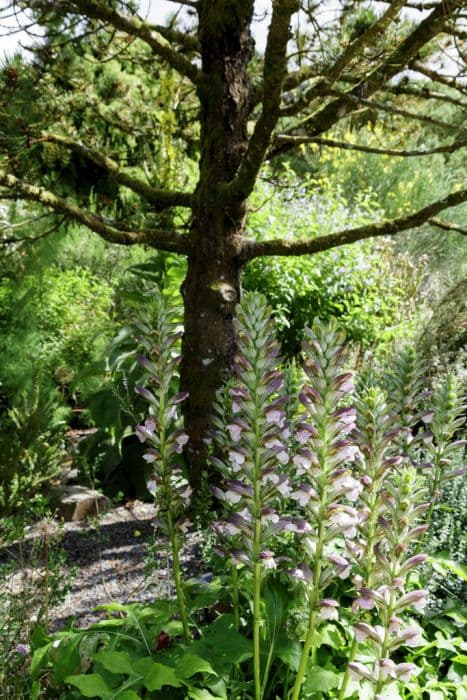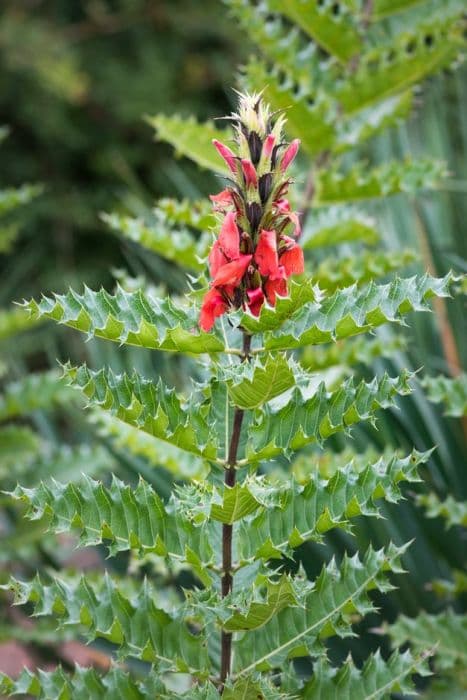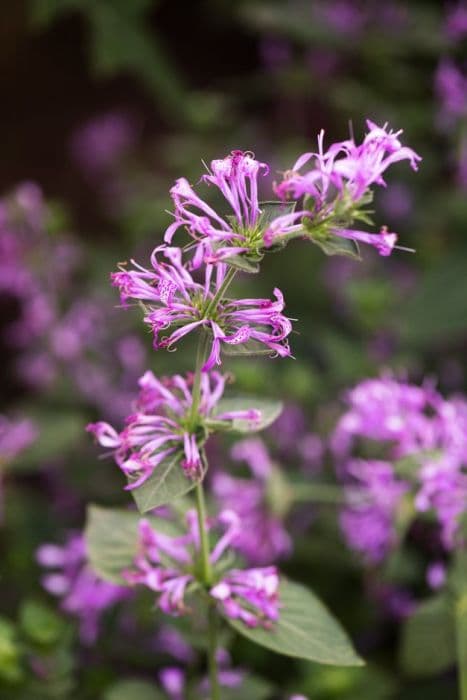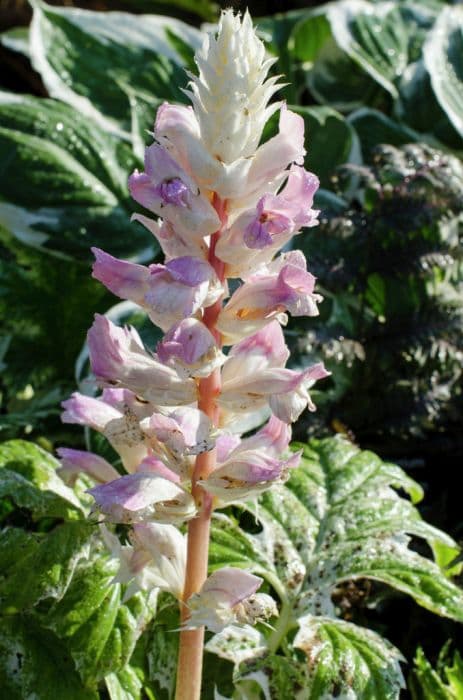Christmas Pride Ruellia macrantha

ABOUT
Ruellia macrantha, more commonly known as Christmas Pride, is a vibrant ornamental plant that dazzles with its colorful appearance. This perennial plant boasts an evergreen foliage of glossy, dark green leaves that are elongated and lance-shaped, providing a lush backdrop for the brilliant flowers it produces. The flowers of Christmas Pride are its most striking feature, large and trumpet-shaped, often found in a radiant pink or purple hue that can add a touch of the tropics to any garden. The blooms are typically profuse and can appear either singly or in clusters, depending on the variety. The petals have a flared look and can often display subtle veining patterns that contribute to their ornamental value. The blossoms emerge from the axils of the leaves, which means they grow in the upper angle between the stem and the leaf, creating a delightful contrast against the deep green foliage. Christmas Pride has a somewhat shrubby growth habit, tending to grow upright and form a bushy appearance with stems that are sometimes woody at the base. The overall presentation of the plant gives it an elegant and tropical flair, making it a popular choice for gardeners seeking to add a splash of color to their landscape. Despite the restriction to mention specific dimensions, this plant's visual impact in a garden is significant owing to its rich foliage and attractive flowers, which can create a striking display throughout the year. It thrives in warm climates and can often be found embellishing patios, borders, and as a standout specimen within garden beds.
About this plant
 Names
NamesSynonyms
Christmas Pride, Largeflower Ruellia, Wild Petunia
Common names
Cryphiacanthus barbadensis, Ruellia barbadensis, Eranthemum macranthum, Cryphiacanthus angustifolius.
 Toxicity
ToxicityTo humans
Ruellia macrantha, commonly known as Christmas Pride, does not have a widespread reputation for being a toxic plant to humans. While it’s generally not considered poisonous, it’s still advisable to prevent ingestion and contact with the sap, as with many houseplants, especially if you have a known sensitivity or allergy. In case of accidental ingestion or any adverse reactions, seek medical attention.
To pets
Christmas Pride is not well-documented for its toxicity to pets such as cats and dogs. However, as pet digestive systems are different from humans, it’s generally a good practice to keep houseplants out of reach. If your pet ingests any part of the plant and shows signs of distress or abnormal behavior, it’s best to consult with a veterinarian.
 Characteristics
CharacteristicsLife cycle
Perennials
Foliage type
Evergreen
Color of leaves
Green
Flower color
Lavender
Height
2-3 feet (0.61-0.91 meters)
Spread
2-3 feet (0.61-0.91 meters)
Plant type
Shrub
Hardiness zones
9
Native area
Mexico
Benefits
 General Benefits
General Benefits- Ornamental Appeal: Ruellia macrantha, commonly known as Christmas Pride, adds aesthetic value to gardens with its vibrant flowers and lush foliage.
- Habitat for Wildlife: The flowers of Christmas Pride can attract pollinators such as bees and butterflies, providing a beneficial environment for local ecosystems.
- Low Maintenance: Christmas Pride is generally easy to care for, making it a convenient choice for gardeners of all skill levels.
- Drought Tolerance: Once established, it can tolerate periods of dryness, reducing the need for constant watering.
- Adaptable Growth: Christmas Pride can grow in a variety of soil types, making it suitable for different garden settings.
- Fast Growing: It can quickly reach its mature size, providing a full and lush appearance in a relatively short period.
 Medical Properties
Medical PropertiesThis plant is not used for medical purposes.
 Air-purifying Qualities
Air-purifying QualitiesThis plant is not specifically known for air purifying qualities.
 Other Uses
Other Uses- Ornamental Display: Ruellia macrantha is often used in gardens and indoor settings for its attractive flowers and foliage.
- Privacy Screening: Its bushy growth habit makes it suitable for creating natural privacy screens in gardens.
- Butterfly Attraction: The plant is known to attract butterflies, which can aid in pollination of gardens.
- Erosion Control: It can be used on slopes and banks to prevent soil erosion due to its root system.
- Hummingbird Garden: Its flowers can attract hummingbirds, making it a great addition to such gardens.
- Cultural Significance: In certain cultures, the plant may be used in ceremonies or decorative arts for its aesthetic appeal.
- Education: Ruellia macrantha can be used in educational settings to teach about plant growth and botany.
- Photography: Its vibrant blooms make it a popular subject for photographers and plant enthusiasts.
- Container Gardening: It is suitable for growing in pots and containers due to its manageable size.
- Companion Planting: The plant can be used in companion planting to enhance the growth of other plants or control pests naturally.
Interesting Facts
 Feng Shui
Feng ShuiThe Ruellia is not used in Feng Shui practice.
 Zodiac Sign Compitability
Zodiac Sign CompitabilityThe Ruellia is not used in astrology practice.
 Plant Symbolism
Plant Symbolism- Adaptability - Ruellia macrantha, also known as Christmas Pride, is known for its ability to thrive in various conditions, symbolizing the ability to adapt and flourish in diverse environments.
- Beauty - With its striking flowers, Christmas Pride represents beauty and the appreciation of visual aesthetics.
- Resilience - This plant can bounce back from challenges and changes in its environment, making it a symbol of resilience and determination.
- Growth - Ruellias, including Christmas Pride, can grow rapidly, symbolizing personal growth and development.
- Celebration - As its common name suggests, Christmas Pride is associated with celebration and happiness, often blooming around the holiday season.
 Water
WaterChristmas Pride requires consistent moisture in the soil but does not like to sit in water. It should be watered once the top inch of soil feels dry to the touch, which typically means watering approximately once a week, but this can vary depending on environmental conditions. When watering, use enough water to moisten the soil thoroughly, which might be around 16 to 32 ounces depending on the size of the pot and the plant. It's essential to ensure that any excess water can drain freely to prevent root rot. During the winter months, reduce watering slightly as the plant's growth slows down.
 Light
LightChristmas Pride thrives in bright, indirect sunlight and should be placed in a spot where it can receive this kind of light for most of the day. Direct sunlight, especially during the peak hours of the day, can scorch the leaves, so avoid placing it in full sun. A north or east-facing windowsill is a good spot as it provides gentle light without the harsh midday sun.
 Temperature
TemperatureChristmas Pride prefers temperatures between 60 to 85 degrees Fahrenheit and should be protected from temperatures below 50 degrees Fahrenheit as they can damage the plant. It is a tropical plant and thus favors warmth and moderate humidity. Ensure to keep the plant away from drafts and sudden temperature changes for optimal health.
 Pruning
PruningChristmas Pride benefits from occasional pruning to encourage bushier growth and to remove any dead or damaged foliage. Pruning is best done in the spring or early summer before the plant's growth period. Snip just above a leaf node to promote new branches, and remove only a quarter of the plant's overall foliage at a time to avoid stress.
 Cleaning
CleaningAs needed
 Soil
SoilFor Christmas Pride (Ruellia macrantha), a well-draining soil mix is crucial. A mixture of peat, perlite, and garden soil, in equal parts, works well to ensure adequate drainage and aeration. The best pH for this plant's growth should be slightly acidic to neutral, ranging from 6.0 to 7.5.
 Repotting
RepottingChristmas Pride should be repotted every 2 to 3 years, or when it becomes pot-bound. Spring or early summer is the ideal time for repotting to allow the plant to recover during its active growing season.
 Humidity & Misting
Humidity & MistingChristmas Pride thrives in moderate to high humidity levels, ideally between 50% to 70%. Avoid placing it in very dry environments, as it needs a certain level of humidity to flourish.
 Suitable locations
Suitable locationsIndoor
Provide bright, indirect light and high humidity.
Outdoor
Place in part shade, protect from strong winds.
Hardiness zone
9-11 USDA
 Life cycle
Life cycleThe Ruellia macrantha, commonly known as Christmas pride, commences its life cycle as a seed that germinates after a period of dormancy broken by favorable conditions such as moisture and warm temperatures. Upon germination, seedlings emerge and develop into juvenile plants with their first true leaves, initiating the vegetative growth stage characterized by rapid leaf and stem development. As the plant matures, it enters the flowering stage, producing vibrant and attractive blooms that are typically pollinated by insects, leading to fertilization. Following successful pollination, the plant develops fruits that contain seeds, completing the sexual reproduction phase. Once the fruits mature, they dehisce or are otherwise disrupted, releasing seeds into the surrounding environment to start a new cycle. Christmas pride can also propagate vegetatively through stem cuttings, allowing for faster multiplication and skip stages of seed development.
 Propogation
PropogationPropogation time
Spring to Summer
The most popular method of propagation for Ruellia macrantha, commonly known as Christmas Pride, is through stem cuttings. This technique is usually performed during the warmer months when the plant is actively growing. To propagate, a healthy stem approximately 4 to 6 inches (about 10 to 15 cm) long is selected and cut just below a leaf node. The lower leaves are removed, and the cut end can be dipped in rooting hormone powder to encourage root development. The cutting is then placed in a well-draining potting mix and kept moist but not waterlogged. It's important to provide indirect light and a consistently warm environment for the cuttings to thrive. With proper care, the cuttings will develop roots in a few weeks, after which they can be potted up individually.

